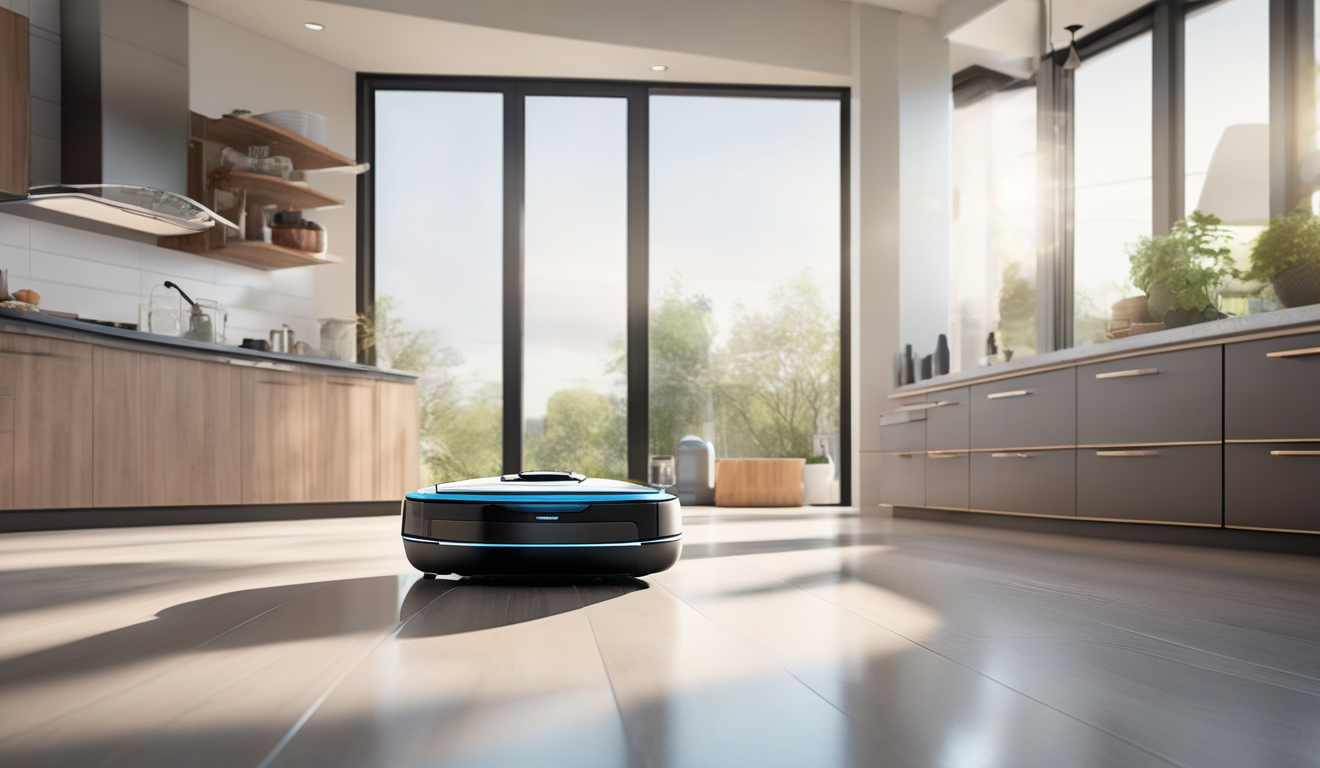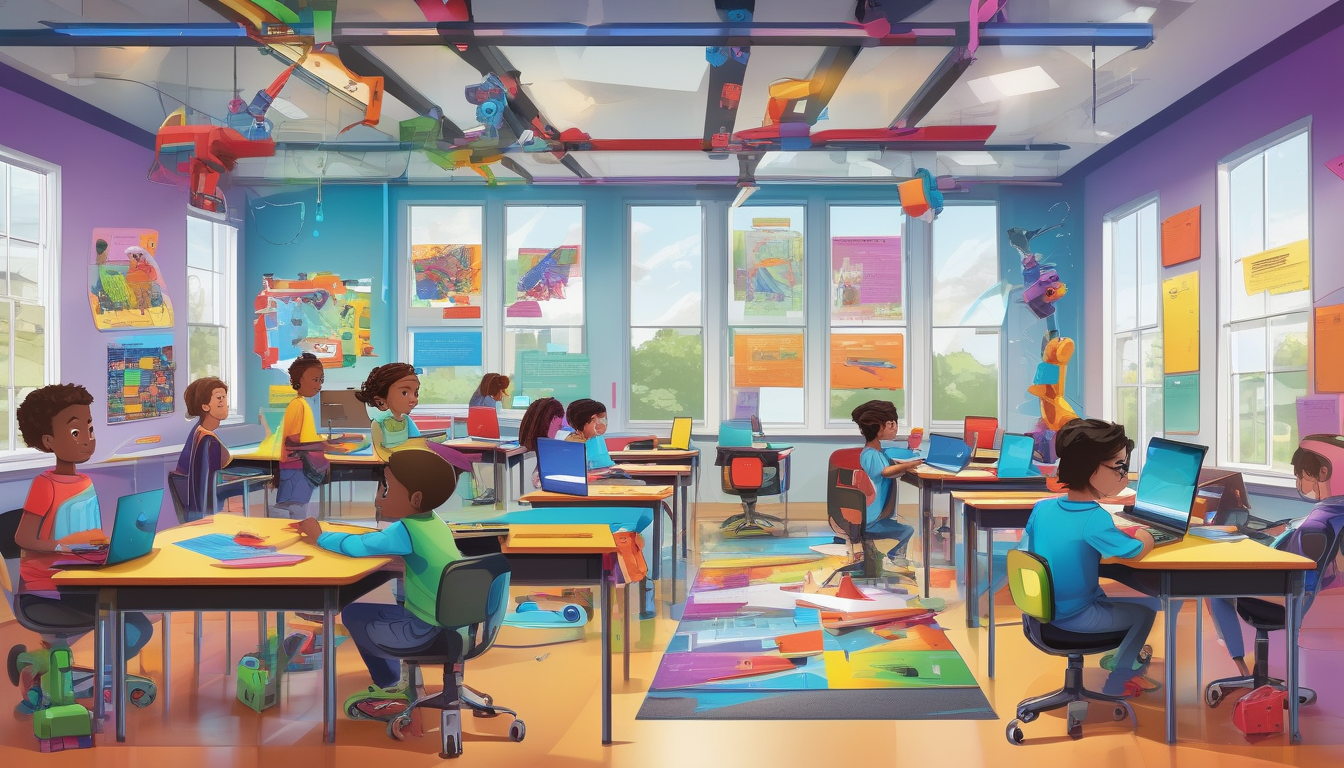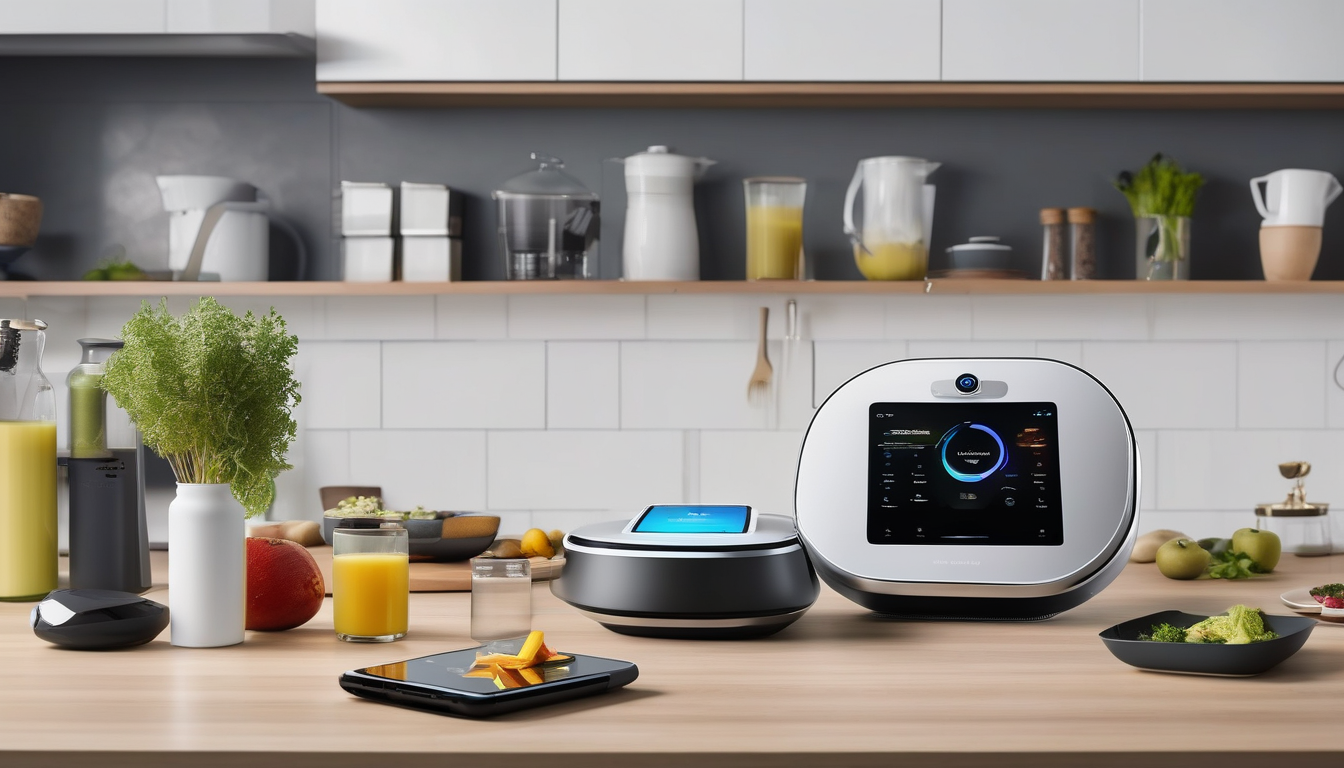The Growing Influence of Robotics in Everyday Life

In today’s fast-paced world, the presence of robotics is becoming increasingly significant, touching nearly every aspect of our daily lives. From the moment we wake up to the time we go to bed, robots are silently working in the background, enhancing our experiences and making tasks more efficient. Have you ever thought about how many times you interact with robotic technology in a day? Whether it’s through smart home devices, automated customer service, or healthcare innovations, robotics is reshaping our routines in ways we never imagined.
Imagine waking up to a robot that prepares your coffee just the way you like it, or a virtual assistant that helps you plan your day. This isn’t science fiction; it’s our new reality. Robotics is not just about industrial machines or futuristic gadgets; it’s about improving our quality of life. The integration of robotics into various sectors, including healthcare, education, and personal assistance, is transforming how we live, learn, and care for one another.
In healthcare, for instance, surgical robots are enhancing precision and reducing recovery times, while robotic caregivers assist the elderly and disabled, ensuring they receive the support they need. In the classroom, educational robots are engaging students in STEM learning, making complex subjects more accessible and fun. The versatility of robots allows them to adapt to different environments, serving as teaching assistants or even companions for those with special needs.
As we dive deeper into this robotic revolution, we also face challenges that come with it. The rise of automation raises questions about job displacement and ethical considerations. Are we ready to embrace a future where robots play a significant role in our lives? It’s a conversation worth having as we navigate the balance between technological advancement and human employment.
In conclusion, the growing influence of robotics in everyday life is a double-edged sword. While it brings forth incredible conveniences and opportunities for advancement, it also requires us to think critically about the implications of such rapid change. As we continue to integrate robotics into our lives, the question remains: how can we harness this technology to benefit society as a whole?

Robotics in Healthcare
Robots are revolutionizing the healthcare landscape, and their impact is nothing short of extraordinary. Imagine a world where surgical procedures are performed with pinpoint accuracy, where patient care is enhanced by intelligent machines, and where hospital operations are streamlined for maximum efficiency. This is not a distant future; it is happening right now!
One of the most significant advancements is in surgical robotics. These sophisticated machines assist surgeons during complex procedures, allowing for minimally invasive techniques. This means less pain for patients, shorter recovery times, and reduced risk of infection. For instance, robotic-assisted surgery has been shown to improve outcomes in procedures like prostatectomies and heart surgeries. The precision of these robots can lead to fewer complications and better overall health outcomes.
Moreover, robots are stepping in to assist healthcare professionals in patient care. From robotic nurses that can monitor vital signs to automated medication dispensers, these technologies are enhancing the efficiency of healthcare delivery. They allow healthcare workers to focus more on patient interaction rather than routine tasks, thus improving the quality of care. For example, robots like PARO—a therapeutic robotic seal—are used in nursing homes to provide comfort and companionship to elderly patients, showcasing how robots can enhance emotional well-being.
However, the integration of robotics in healthcare isn’t without its challenges. There are concerns regarding the cost of implementation, as acquiring and maintaining these advanced systems can be expensive. Furthermore, there are ethical considerations surrounding the use of robots in sensitive environments like hospitals. Will patients feel comfortable being treated by machines? Will the human touch be lost in the process? These questions are crucial as we navigate the future of healthcare robotics.
| Application | Benefits |
|---|---|
| Surgical Robots | Increased precision, reduced recovery time |
| Robotic Nurses | Enhanced monitoring, improved patient interaction |
| Therapeutic Robots | Emotional support, improved quality of life |
In conclusion, the role of robotics in healthcare is expanding rapidly, offering numerous benefits that can transform patient care and surgical outcomes. As we embrace these technologies, it’s essential to address the accompanying challenges to ensure that the human element remains at the forefront of healthcare.

Robots in Education
In today’s fast-paced world, educational robotics is paving the way for a transformative approach to learning. Imagine a classroom where students are not just passive recipients of information but active participants in their own education. Robots are becoming integral to this shift, engaging students in ways that traditional teaching methods simply can’t match. They are not only captivating attention but also fostering a deeper understanding of complex subjects.
One of the most exciting aspects of robotics in education is how it promotes hands-on learning experiences. Students get to interact with robots, programming them to perform tasks, which enhances their problem-solving skills and critical thinking. This type of learning mimics real-world scenarios, making it easier for students to grasp challenging concepts. For instance, when students program a robot to navigate a maze, they are not just learning about coding; they are also understanding algorithms and logical reasoning.
Furthermore, robots serve as interactive learning tools. They can be used to teach programming languages, mathematics, and even art. By incorporating robotics into the curriculum, educators can create an environment where students feel empowered to explore, experiment, and innovate. For example, a robot can be programmed to dance, allowing students to learn about choreography and rhythm while also grasping the fundamentals of programming.
Another fascinating application of robotics in education is the use of robots as teaching assistants. These robots can help manage classroom activities, provide personalized learning experiences, and even assist students who may need extra help. Imagine a classroom where a robot circulates, providing additional resources to students struggling with specific concepts. This not only alleviates some of the burdens on teachers but also ensures that every student receives the attention they need.
However, the integration of robots in education is not without its challenges. While they offer numerous benefits, there are concerns regarding the cost and training required for effective implementation. Schools must invest in both the technology and the professional development of teachers to maximize the potential of these tools. As we move forward, it is crucial to address these challenges to fully harness the power of robotics in education.
Interactive Learning Tools
In today’s fast-paced world, are becoming essential in classrooms, transforming the way students engage with their education. These tools, often in the form of robots, bring a level of excitement and interactivity that traditional methods simply can’t match. Imagine a classroom where students are not just passive listeners but active participants in their learning journey. This is the magic that interactive robots bring to the table.
One of the most significant advantages of using these tools is their ability to teach programming and problem-solving skills in a fun and engaging way. For instance, robots like LEGO Mindstorms or Ozobot allow students to build and program their own devices, providing hands-on experience that solidifies their understanding of complex concepts. This kind of learning is akin to a workout for the brain; just as physical exercise strengthens muscles, interactive learning strengthens cognitive abilities.
Moreover, these robots can cater to different learning styles, ensuring that every student can find a way to connect with the material. Visual learners might thrive with robots that display colorful graphics, while kinesthetic learners can benefit from programming a robot to perform tasks. This personalized approach to education helps to foster a love for learning and encourages students to explore their interests further.
However, it’s important to recognize that the integration of interactive tools isn’t without challenges. Teachers must receive proper training to effectively incorporate these technologies into their lesson plans. Additionally, the cost of these tools can be a barrier for some schools, particularly those in underfunded areas. Despite these hurdles, the potential of interactive learning tools to revolutionize education is undeniable.
In summary, are paving the way for a new era of education. By making learning more engaging and personalized, they not only enhance students’ knowledge but also inspire them to pursue careers in fields like STEM. As we continue to embrace these technologies, we can look forward to a future where learning is not just about memorizing facts, but about igniting curiosity and creativity.
Robots as Teaching Assistants
Imagine walking into a classroom where a friendly robot greets you at the door, ready to assist both teachers and students. are becoming an integral part of modern education, transforming how we learn and interact in the classroom. These innovative machines are designed to support educators by handling various tasks, which allows teachers to focus more on engaging with students and less on administrative duties.
One of the most significant benefits of using robots in educational settings is their ability to provide personalized learning experiences. For instance, robots can adapt to individual students’ learning paces, offering tailored assistance that caters to each learner’s unique needs. This is especially beneficial in diverse classrooms where students may have varying levels of understanding. By providing real-time feedback and support, robots can help students grasp complex concepts more effectively.
Furthermore, robots can assist in managing classroom activities, such as taking attendance or distributing materials. This automation of routine tasks not only saves time but also helps create a more organized learning environment. Educators can then dedicate their time to more meaningful interactions with their students, fostering a richer educational experience.
However, the integration of robots as teaching assistants is not without its challenges. Some educators may feel apprehensive about relying on technology in the classroom. Concerns about job displacement and the potential for reduced human interaction are common. It’s essential to address these worries by emphasizing that robots are not here to replace teachers but to enhance their capabilities. The goal is to create a collaborative environment where both robots and educators work together to improve student outcomes.
In conclusion, the role of robots as teaching assistants is evolving and holds tremendous potential for the future of education. As technology continues to advance, we can expect to see even more innovative uses of robots in classrooms, making learning more interactive and personalized. Embracing this change could lead to a new era of education where students thrive through enhanced support and engagement.
Promoting STEM Engagement
In today’s rapidly evolving world, the importance of STEM education—science, technology, engineering, and mathematics—cannot be overstated. Robots are playing a crucial role in igniting interest in these fields among students. Imagine a classroom where students not only learn about programming but also get to interact with robots that bring their coding lessons to life. This hands-on experience makes learning exhilarating and memorable!
One of the most exciting aspects of using robotics in education is how it fosters creativity and problem-solving skills. By designing and programming robots, students engage in a dynamic learning process that encourages critical thinking. They are no longer passive recipients of information; instead, they become active participants in their own education. This shift can be likened to transforming a caterpillar into a butterfly—students emerge with new skills and perspectives that empower them to tackle real-world challenges.
Moreover, various initiatives are in place to promote STEM engagement through robotics. For instance, schools and organizations are hosting competitions where students can showcase their robotic creations. These events not only enhance their technical skills but also build teamwork and collaboration. Consider the following benefits of such initiatives:
- Increased Interest: Students are more likely to pursue STEM careers when they have hands-on experience.
- Skill Development: Participants develop essential skills such as coding, engineering, and analytical thinking.
- Community Building: Robotics competitions foster a sense of community among students, teachers, and parents.
Furthermore, educational institutions are increasingly integrating robotics into their curricula to ensure that students are not only consumers of technology but also creators. By collaborating with tech companies and educational organizations, schools can provide students with the tools and resources they need to thrive in a tech-driven world. This collaborative approach is akin to planting seeds in fertile soil; with the right nurturing, students can grow into the innovators of tomorrow.
In conclusion, the integration of robotics in education is a powerful catalyst for promoting STEM engagement. It offers students a unique opportunity to explore their interests, develop valuable skills, and prepare for future careers in a technology-centric landscape. As we continue to embrace this exciting frontier, we pave the way for a generation that is not only tech-savvy but also passionate about making a difference in the world.
Robotics in Special Education
Robotics is making a significant impact in the realm of special education, offering innovative solutions to support students with diverse learning needs. These robots are not just machines; they serve as interactive companions that can facilitate communication, enhance learning experiences, and promote social interaction among students. Imagine a classroom where a robot can engage a child who struggles with verbal communication, helping them express their thoughts and feelings in a way that feels comfortable and safe.
One of the most exciting aspects of using robots in special education is their ability to provide personalized learning experiences. For instance, robots can be programmed to adapt to individual learning styles, ensuring that each student receives the support they need. This tailored approach can significantly improve engagement and understanding, making learning not just effective but also enjoyable.
Furthermore, robots can assist in developing essential life skills. They can be used in role-playing scenarios, allowing students to practice social interactions in a controlled environment. This not only builds confidence but also prepares them for real-world situations. For example, a robot might simulate a grocery store experience, teaching students how to handle money and interact with cashiers. Such practical applications are invaluable in helping students gain independence.
However, the integration of robotics in special education is not without its challenges. While many educators are excited about the potential benefits, they also face hurdles such as cost and training. Implementing these technologies requires significant investment and ongoing professional development to ensure that teachers are equipped to use them effectively. Despite these challenges, the potential for robots to enhance learning outcomes is immense.
In conclusion, as we continue to explore the role of robotics in special education, it becomes clear that these technologies can transform the educational landscape. By providing tailored support and fostering social skills, robots can empower students with special needs to thrive in their learning environments. The future of education is not just about traditional teaching methods; it’s about embracing innovation to create inclusive and engaging learning experiences for all.

Personal Assistants and Smart Homes
The rise of personal assistant robots and smart home technology is not just a trend; it’s a revolution that is fundamentally changing how we manage our daily tasks. Imagine walking into your home, and with a simple command, your lights dim, your favorite music starts playing, and dinner is cooking—all thanks to your smart home system. This seamless integration of technology into our lives is making everyday routines not only easier but also more enjoyable.
Personal assistants, like Amazon’s Alexa or Google Assistant, have become household names, transforming our interactions with technology. They can perform a myriad of tasks, from setting reminders to controlling smart appliances. But what does this mean for our daily lives? It means more time for what truly matters—whether that’s spending time with family, pursuing hobbies, or simply relaxing after a long day.
One of the most exciting aspects of smart homes is their ability to automate daily chores. Consider the following functionalities:
- Automated lighting systems that adjust based on the time of day.
- Smart thermostats that learn your preferences and save energy.
- Robotic vacuum cleaners that keep your floors spotless without lifting a finger.
These innovations are not just about convenience; they significantly improve our quality of life. For instance, smart home technology can enhance the safety of our living environments. With security cameras and smart locks, homeowners can monitor their properties remotely, providing peace of mind whether they are at home or away.
However, as with any technological advancement, there are challenges to consider. The integration of these systems raises questions about privacy and data security. How much personal information are we willing to share for the sake of convenience? It’s a delicate balance between embracing innovation and protecting our personal space.
In conclusion, the world of personal assistants and smart homes is reshaping our lifestyles in ways we never thought possible. As we continue to navigate this exciting landscape, it’s essential to stay informed and consider both the benefits and challenges that come with it. The future is bright, and it’s filled with possibilities that can enhance our everyday lives.
Smart Home Integration
In today’s fast-paced world, the integration of smart home technology is nothing short of a revolution. Imagine walking into your home and having the lights automatically adjust to your preferred brightness, the thermostat set to your ideal temperature, and your favorite music playing softly in the background. This isn’t just a dream; it’s the reality that smart home robots are creating for us. By automating daily chores and tasks, these devices are not only enhancing our comfort but also providing an unprecedented level of convenience.
Smart home integration involves a network of devices that communicate with each other, making our lives easier and more efficient. From smart speakers that can control your home environment with just your voice to robotic vacuum cleaners that effortlessly glide across your floors, the possibilities are endless. These devices work together seamlessly, allowing us to manage our homes with a simple tap on our smartphones or even through voice commands.
Consider the following functionalities of smart home robots:
- Automated Lighting: Smart bulbs can be programmed to turn on or off at specific times, or even adjust based on the amount of natural light in the room.
- Home Security: Smart cameras and alarms can alert you to unusual activity, giving you peace of mind whether you’re home or away.
- Energy Management: Smart thermostats learn your preferences and optimize energy consumption, potentially saving you money on utility bills.
Moreover, the integration of smart home technology not only enhances our quality of life but also promotes sustainability. By optimizing energy use and reducing waste, these systems contribute to a greener planet. However, as we embrace this technological shift, it’s essential to consider the implications of increased reliance on automation. While convenience is a significant benefit, we must also address concerns about privacy and data security.
In conclusion, the rise of smart home integration is transforming how we manage our daily lives. With the ability to automate tasks and improve our home environment, these technologies are paving the way for a more comfortable and efficient future. As we continue to explore the possibilities of smart homes, it’s clear that the integration of robotics is not just a trend; it’s a fundamental change in how we interact with our living spaces.
Challenges of Automation
The rise of automation through robotics brings with it a host of challenges that society must address. While these technologies promise improved efficiency and convenience, they also raise significant concerns that can’t be ignored. One of the most pressing issues is job displacement. As robots take over tasks traditionally performed by humans, many workers find themselves at risk of losing their jobs. This shift creates a ripple effect in the economy, leading to increased unemployment and a need for retraining programs.
Another challenge lies in the realm of ethical concerns. Who is responsible when a robot makes a mistake? For instance, if a surgical robot malfunctions, who bears the blame—the manufacturer, the hospital, or the medical professionals using it? These questions are crucial as we integrate more robotics into critical sectors like healthcare and education.
Moreover, the digital divide poses a significant barrier to the widespread adoption of robotics. Not everyone has equal access to the latest technologies, which can exacerbate existing inequalities. For instance, schools in affluent areas may have the resources to incorporate advanced educational robots, while those in underprivileged neighborhoods struggle to provide basic educational tools.
Additionally, there are concerns about privacy and security. As personal assistant robots and smart home devices become commonplace, they collect vast amounts of data about our daily lives. The potential for misuse of this data raises alarms about individual privacy rights and the security of sensitive information.
Lastly, we must consider the long-term implications of relying heavily on automation. While robots can enhance productivity, they also risk creating a dependency that could stifle human ingenuity and creativity. If we become too reliant on machines, will we lose the ability to think critically and solve problems independently?
In summary, while the benefits of robotics and automation are undeniable, we must tackle these challenges head-on. Addressing job displacement, ethical concerns, the digital divide, privacy issues, and the potential loss of human creativity will be essential in ensuring that the integration of robotics into our daily lives is both beneficial and equitable.
Frequently Asked Questions
- How are robots changing healthcare?
Robots are revolutionizing healthcare by enhancing surgical precision, assisting in patient care, and streamlining hospital operations. They help doctors perform complex surgeries with greater accuracy and reduce recovery times for patients.
- What role do robots play in education?
In education, robots serve as interactive learning tools that engage students in hands-on experiences. They help teach programming and problem-solving skills, making learning more effective and fun for students of all ages.
- Can robots assist students with special needs?
Absolutely! Robots are increasingly being used to support students with special needs. They provide tailored assistance, promote social interaction, and enhance learning experiences, making education more inclusive.
- How do personal assistant robots improve daily life?
Personal assistant robots help manage daily tasks, from scheduling appointments to controlling smart home devices. They enhance convenience, allowing you to focus on what truly matters in your life.
- What challenges come with increased automation?
While robotics offers numerous benefits, it also presents challenges such as job displacement and ethical concerns. It’s important to balance automation with the needs of the workforce to ensure a positive impact on society.
- How can robots promote STEM engagement?
Robots can inspire students to pursue careers in science, technology, engineering, and mathematics (STEM). Initiatives that incorporate robotics into classrooms help spark interest and creativity in these fields.
- What are the benefits of smart home robots?
Smart home robots automate daily chores, improving efficiency and comfort. They can handle tasks like cleaning and security, reshaping household management and enhancing your overall quality of life.













